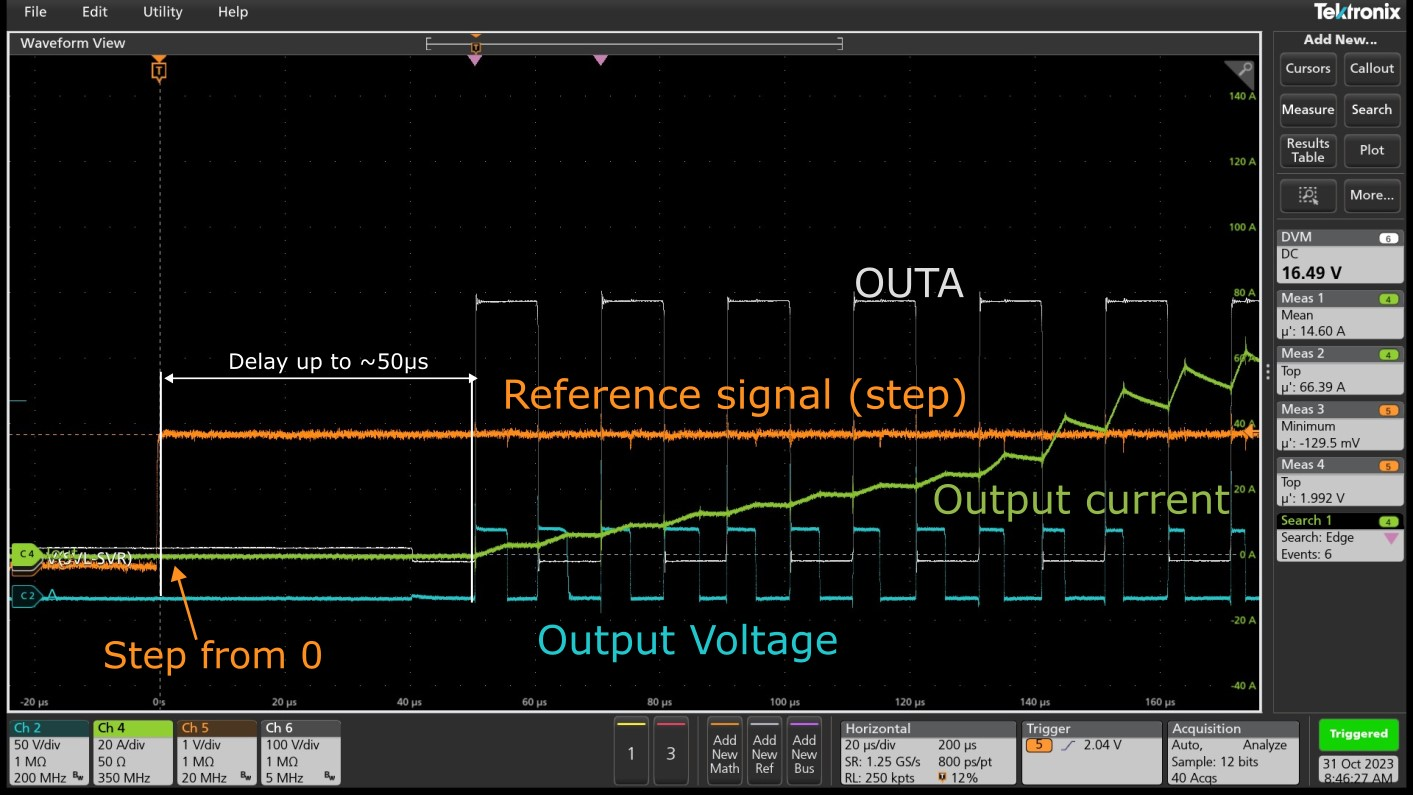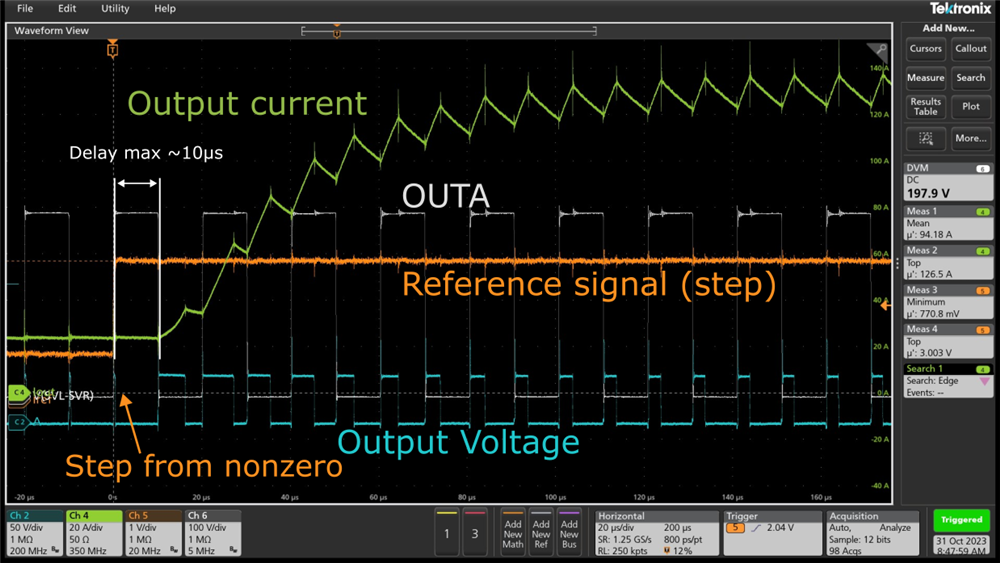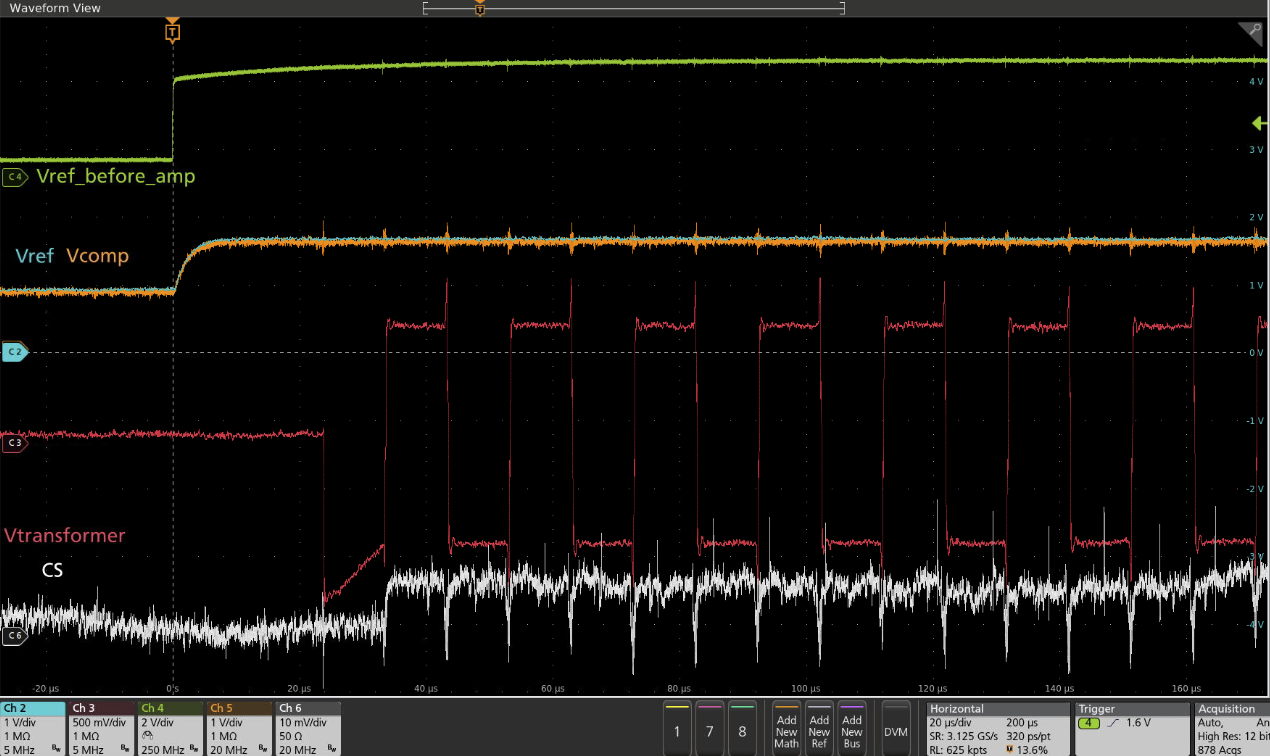I have a converter design utilising the UCC28951, acting as a current generator. There is (almost) no output capacitance.
The internal error amplifier is bypassed by shorting the EA- and comp legs and an external current regulator measures the output current, adjusting the reference to EA+ accordingly. The converter operates in Peak Current Mode
The switching frequency is 50kHz.
The problem arises when increasing the input reference (EA+) from below the switching threshold(~0.8V) to a higher value. This results in a delay of approximately 50µs before the converter begins switching, which is not suitable for the intended application. This can be seen in the following image:

However, when the reference step is initiated from a higher level where the converter is already in operation, there is no noticeable delay.
I suspect that this issue may be related to the burst mode function of the converter. It's possible that the converter initiates in burst mode when starting from zero and takes some time to transition out of this mode. This might be a wrong assumption.
I attempted to address the problem by setting the Tmin resistor to its minimum value of 10kΩ, but this adjustment did not resolve the issue.
Question: Is there a way to remove this initial delay when stepping from zero?
Note: An amplifier circuit is positioned between the reference signal depicted in the plots and the EA+ leg of the controller. Its purpose is to ensure the appropriate scaling of the reference signal (from 0.8V to 2.8V). It's important to note that this circuit operates correctly and is not the source of the issue.








